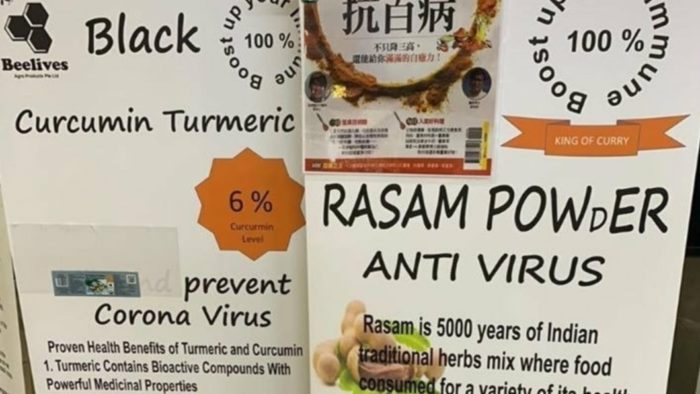Rasam is a traditional South Indian dish, prepared almost thrice or more times a week. It is a comfort food and also a dish that is filled with tons of medicinal properties and is served when one is sick.
This beautiful concoction now seems to be used as a prophylactic measure against CoViD-19 in China. In the infected patients, it cannot kill the virus but helps to ward off any other foreign intrusions and helps build immunity.
The word rasam derives its origin from the Sanskrit word “Rasa” which simply means juice. It also means “The essential products of digestion”. It is known as Rasam in Tamil, Saaru in Kannada and Chaaru in Telugu. Each part of South India has its own variety of Rasam that is enjoyed by one and all. It is traditionally served after Sambar rice during a meal and sometimes even served in a cup to drink. Rasam is prepared by using tamarind juice as its base and followed by a variety of spices that includes coriander powder, turmeric, cumin, chilli powder, and pepper, and also includes tomatoes, curry leaves and coriander leaves. Rasam is regarded as the ideal recipe that follows the exact principles laid down by Ayurveda and Siddha. You can even call it a Superfood!
Professor of Ayurveda, Dr Alex Hankey says South Indian cuisine with its Sambhar and Rasam emphasises replacement of mineral losses due to Swedana. “Both systems use the fundamental masalas including Haridra, Ginger, Dhanya and Black Pepper that reduce cancer, especially in the GIT (Haridra), enhance digestion (Ginger and Dhanya) and absorption (Black Pepper).
How did Rasam come into existence? According to ancient stories, rasam’s origin dates back to the Pandiyan rule in the South, which is around the 14th century. A young ruler of the dynasty fell very ill and no medicine seemed to cure his illness. The court then sent out a proposition to the subjects of the kingdom that if anyone were to come up with a cure would be awarded heavily. A young Brahmin priest by the name Karunas decided to try his luck out and came up with a recipe using some ingredients and seasonal vegetables like lemon, curry leaves, gooseberries, pineapple, black pepper, salt, turmeric and ground them together before boiling it in water. This soup like concoction cured the prince of his illness and the prince termed this soup as his favourite dish.
Sourastara, an immigrant community living in Madurai from the 16th century, still refer to it as Pulichaaru, Puli meaning sour.
Since then, we have had a diverse collection of rasams across India. To name a few that originated in the south:
Mollagu rasam (Pepper rasam)
Poondu rasam (Garlic rasam)
Maangai rasam (Mango rasam)
Elimichai Rasam (Lemon rasam)
Mysore Rasam
Nellikai rasam (Gooseberry rasam)
Jeera Rasam (Cumin rasam)
Inji chaaru (Ginger rasam)
Paruppu rasam (Lentil rasam)
Kadale Saaru (Groundnut rasam)
Kotambari Jeerige Saaru (Coriander and Cumin Rasam)
Rasam became very popular during the British rule in India and the recipe was adopted by them to come up with a new variety known as Mulligatawny. This word originates from the Tamil words Milagai meaning chilli or Milagu meaning pepper and Tanni meaning water.
As mentioned before, Rasam is medicinal concoction. Hot and spicy rasam is great to have during a cold, cough and fever. It has antipyretic activity which means it brings down the high temperature in the body. Bolla et al., 2015, have reported that a South Indian diet with rasam everyday showed a significant reduction in the blood sugar levels of forty volunteers between 30 and 60 years (1).
The incorporation of Rasam in the diet of an anaemic patient showed a better iron profile- haemoglobin, serum iron, total iron binding capacity. Rasam also aids in lactating in mothers and is served during the evening. Rao et al., 2006, have reported that rasam is one of the daily preferred food items during pregnancy and after delivery among the tribals of north coastal Andhra Pradesh(2).
The Yanadi tribe of Andra Pradesh consider rasam as a good laxative. Due to the incorporation of turmeric in rasam, it has very good antimicrobial properties.
Now, one will rethink before saying no to mum’s Rasam Anna!
Bolla K, Santhi KV, Afnan KS, Krishnaveni P, Kusuma M. Effect of diet counseling on type 2 diabetes mellitus. Int J Sci Technol Res. 2015; 4:112–8.
Rao PD, Babu MS, Rao VL. Persistent traditional practices among the tribals of north coastal Andhra Pradesh. Stud Tribes Tribals. 2006; 4:53–6.




